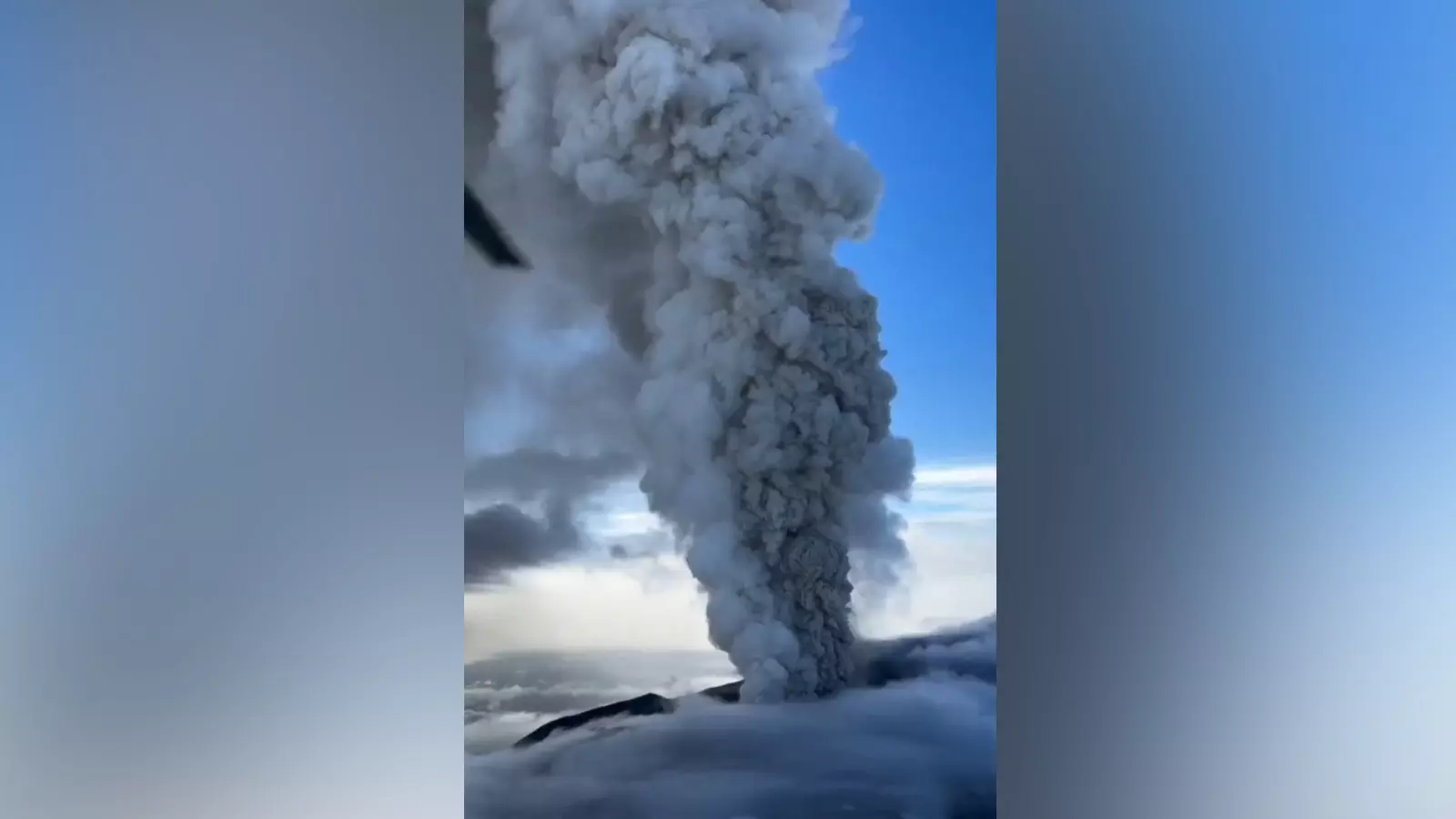
Russia’s Krasheninnikov volcano in Kamchatka erupts after 600 years
Eruption coincides with 7.0 earthquake in Kuril Islands, triggering tsunami warnings; orange aviation code issued, signalling moderate threat to air travel

For the first time in six centuries, the Krasheninnikov Volcano in Russia's Kamchatka Peninsula erupted over the weekend, following a powerful 7.0-magnitude earthquake in the nearby Kuril Islands.
The dual natural events prompted initial tsunami warnings, but Russian authorities have since cancelled them, citing low wave activity.
According to Russia’s Ministry for Emergency Services, the eruption occurred overnight and was captured in dramatic footage shared on social media, showing ash clouds billowing into the sky.
Also read | Russia earthquake: Tsunami reaches US shores; Hawaii braces for 10-ft waves
The volcano, located in one of the world's most seismically active zones, had remained dormant for approximately 600 years until this confirmed eruption.
First historically confirmed event
“This is the first historically confirmed eruption of Krasheninnikov in 600 years,” said Olga Girina, head of the Kamchatka Volcanic Eruption Response Team, speaking to local media outlet RIA.
The eruption coincided closely with a magnitude 7.0 earthquake reported by the US Geological Survey and the Pacific Tsunami Warning System. Although the tremor shook the region, no immediate tsunami alerts were issued by global agencies.
However, Russia’s emergency authorities advised residents to avoid the shoreline as a precaution.
Recent seismic activity
Officials believe the volcano's awakening may be linked to recent seismic activity in the region. Just days earlier, on July 30, a massive 8.7-magnitude undersea earthquake struck near the Kamchatka Peninsula. That quake triggered tsunami alerts as far as French Polynesia, Chile, and Japan.
Also read | Earthquakes don't kill, weak buildings do
Japan’s Meteorological Agency reported that the epicentre was located approximately 250 kilometres from Hokkaido, and minor tremors were felt across Japan's northern islands.
Although no casualties were reported from either earthquake, structural damages were confirmed in parts of Kamchatka. Experts warn that strong aftershocks could continue over the next few weeks.
The Krasheninnikov eruption has led to the issuance of an “orange” aviation code—signaling a moderate threat to air travel in the region due to volcanic ash. The volcano's ash plume rose as high as 6,000 meters into the atmosphere, according to the Institute of Volcanology and Seismology, drifting eastward over the Pacific Ocean. Fortunately, no populated areas lie along its projected path.
Over 300 volcanoes
Kamchatka is home to more than 300 volcanoes, with around 30 considered active. Just last week, the Klyuchevskoy Volcano—one of the most active in the region—also erupted following the initial earthquake, reinforcing concerns about interconnected seismic and volcanic activity.
As of Sunday, authorities have lifted the tsunami warning for the Kamchatka region but continue to monitor the situation closely. Emergency services remain on alert as both geological and atmospheric conditions evolve.

